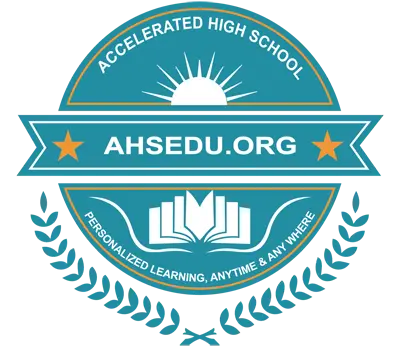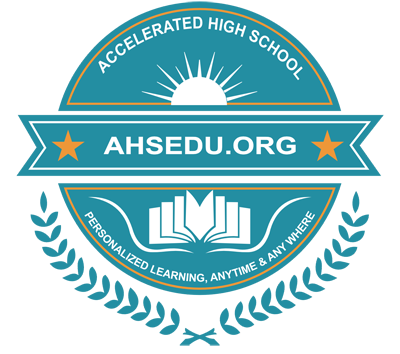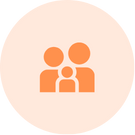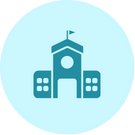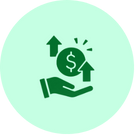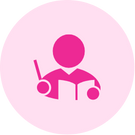Accelerated High School
Standardized Curriculum of Computer Science & Design Thinking-VI
In the 21st century, computer science and design thinking are essential skills for all students. Understanding computing means learning how technology solves problems, supports creativity, and transforms the way we live and work. For Grade 6, the New Jersey Student Learning Standards (NJSLS) emphasise computational thinking, problem-solving, responsible use of technology, and innovation. Students will engage in activities such as coding, using productivity tools, creating digital designs, exploring networks, and understanding cybersecurity. They will also study the impacts of computing on society, practice ethical online behaviour, and discover emerging technologies like artificial intelligence, robotics, and virtual reality. These experiences help students make responsible choices and prepare them to thrive in a technology-driven world.
Mission:
All students will gain a strong foundation in computer science and design thinking aligned with the New Jersey Student Learning Standards (NJSLS-CS 2023). The mission is to ensure that students:
- Understand fundamental computer and network concepts.
- Develop practical skills in word processing, spreadsheets, and digital creativity tools.
- Explore algorithms, programming, and pseudocode to develop problem-solving skills.
- Apply data collection, organization, and visualization skills using real-life examples.
- Discover the fundamentals of cybersecurity, privacy, and responsible online citizenship.
- Gain awareness of emerging technologies (AI, VR, IoT, Robotics) and their safe applications.
- Instruction focuses on computational thinking, creativity, collaboration, and responsible use of technology to address real-world challenges. Students will integrate concepts across disciplines, experience authentic project-based learning, and apply their knowledge to local and global contexts.
Vision:
Prepare Grade 6 students to become technologically literate individuals who can effectively:
- Understand Basic Computer Concepts: Explore computer functions, generations, and applications in daily life.
- Develop Productivity Skills: Practice word processing, spreadsheets, file management, and digital creativity with tools like Canva.
- Understand Computing Systems: Identify hardware and software components, troubleshoot simple issues, and explore the differences between wired and wireless connections.
- Learn Networks & Internet Safety: Explore how networks work, safe online behaviour, and an introduction to cybersecurity.
- Analyze and Organize Data: Collect, sort, and represent data using tables, graphs, and charts.
- Engage in Algorithms & Programming: Write pseudocode, practice block-based coding, and understand programming concepts like loops and variables.
- Explore Emerging Technologies: Study AI, IoT, VR/AR, and robotics while learning safe and ethical practices.
- Design Creatively: Apply design thinking through digital posters, infographics, and presentations.
- Communicate Technological Ideas: Share solutions and ideas using reports, presentations, and digital media.
The vision aims to ensure equitable access to a rigorous, engaging, and real-world relevant computer science curriculum that prepares students to thrive in a rapidly changing digital society.
Spirit and Intent:
The Grade VI Computer Science & Design Thinking curriculum at Accelerated High School (AHS) is designed to align closely with the New Jersey Student Learning Standards for Computer Science (NJSLS-CS 2023), the Career Readiness, Life Literacies, and Key Skills Standards, and the Personal Financial Literacy Standards. This alignment ensures that students receive a comprehensive education that connects computer science concepts to real-world applications, preparing them to be responsible and innovative digital citizens.
Through this curriculum, students gain foundational knowledge in computers and systems, networks, and the safe use of technology, while also engaging in data collection, analysis, and visualization to build logical and critical thinking skills. They explore algorithms, programming, and pseudocode, strengthening their problem-solving abilities and applying computational thinking to meaningful challenges. At the same time, students use productivity tools, creative design applications, and project-based tasks to express ideas and create solutions that extend across academic disciplines.
Students also investigate the social, ethical, and global impacts of computing, with an emphasis on cybersecurity, privacy, accessibility, and digital citizenship. By introducing emerging technologies such as AI, IoT, VR, and robotics, the curriculum encourages curiosity while ensuring safe, ethical, and informed participation in a technology-driven society.
By aligning with state standards, AHS ensures equitable access to rigorous instruction and authentic learning opportunities. Students engage in discussions, investigations, and collaborative projects that require them to evaluate digital information, communicate effectively through digital media, and design creative solutions to real-world problems. The intent is to prepare students to become well-educated, globally minded individuals who can adapt to rapidly changing technologies and use computer science as a tool for innovation and responsible decision-making.
Three Dimensions of AHS Computer Science & Design Thinking Curriculum:
At Accelerated High School (AHS), our Grade 6 computer science curriculum is structured around three key dimensions that reflect what students should know, understand, and be able to do. These dimensions provide a framework for teaching and assessment, ensuring that students develop both technical skills and the ability to apply them meaningfully.
Students engage in active, hands-on learning that extends beyond reading or memorizing definitions. They participate in projects, coding exercises, data analysis activities, and digital design tasks that make computer science engaging and relevant. Each unit builds on prior knowledge, reinforcing concepts while gradually introducing new challenges. This cumulative design ensures a strong foundation and promotes steady growth.
|
Dimension |
Focus Areas |
|
Computational Thinking and Problem-Solving |
Algorithms, pseudocode, coding, iterative programming, and data analysis. |
|
Creativity, Design, and Innovation |
Productivity tools, digital content creation, and design thinking projects. |
|
Ethics, Citizenship, and Emerging Technologies |
Online safety, digital citizenship, cybersecurity, and the impact of emerging technologies. |
The curriculum also emphasises iterative improvement, encouraging students to test, revise, and refine their work. Through cycles of practice, feedback, and reflection, students strengthen their problem-solving skills and learn how to approach challenges with creativity and resilience. This mindset prepares them to adapt to evolving technologies and complex real-world problems.
Curriculum for Grade-VI Computer Science & Design Thinking
Standard 1: Understanding Computing Systems
Learning Objectives:
- Describe the core functions of a computer system and explain how Hardware and Software interact to complete tasks.
- Compare and contrast different types of computing devices (desktops, laptops, tablets, mobile devices, and embedded systems) and evaluate their effectiveness for various purposes.
- Demonstrate the use of input, output, and storage devices, explaining how they support user interaction and data management.
- Analyze how computing systems are utilized across various industries, including healthcare, business, education, transportation, and entertainment, and assess their impact on daily life.
- Predict potential consequences of misuse or overdependence on technology and propose strategies for balanced and ethical usage.
Topics of AHS-CS:
Introduction to Computers
- Definition and Functions of a Computer
- Brief History and Generations of Computers
- Applications of Computers in Daily Life
- Common Input Devices
- Common Output Devices
Computing Systems
- Hardware Components
- Software Components
- Input → Process → Output → Storage model
- Wired vs. Wireless Connections
- Common Computer Problems & Troubleshooting
Word Processing with MS Word
- Creating & Saving a Document
- Text Editing: Cut, Copy, Paste, Undo, Redo
- Formatting Text & Paragraphs
- Bullets, Numbering, and Tables
- Inserting Images & Shapes
- Spell Check & Grammar Tools
- Printing & Page Setup
Standard 2: Networks and Internet
Learning Objectives:
- Explain how computer networks function, including the roles of servers, clients, routers, and communication protocols.
- Illustrate how information is transmitted across the internet and evaluate the benefits and risks of global connectivity.
- Compare wired and wireless communication methods, highlighting issues of speed, accessibility, and security.
- Demonstrate responsible online behavior by identifying and avoiding cyber risks such as phishing, malware, and misinformation.
- Assess the social, cultural, and economic impacts of the internet, including access to knowledge, global communication, and digital divides.
Topics of AHS-CS:
Networks and Internet
- What is a Network?
- Types of Networks (LAN, WAN)
- How Information Travels Across Networks
- Internet Basics
- Public vs. Private Information Online
- Cyber Etiquette & Safe Sharing
- Introduction to Cybersecurity
Impacts of Computing
- Positive Impacts of Technology
- Negative Impacts of Technology
- Accessibility Tools for People with Disabilities
- Ethics in Computing: Privacy, Security, Responsibility
- Responsible Online Behavior & Digital Citizenship
Standard 3: Data Collection, Analysis, and Visualization
Learning Objectives:
- Collect, organize, and categorize different types of data (text, numbers, images, survey results) for meaningful use.
- Apply digital tools to represent data in charts, tables, and graphs, and evaluate which visualization best communicates a given set of information.
- Interpret and analyze data sets to identify patterns, trends, and possible conclusions.
- Critically evaluate data sources for accuracy, bias, and reliability.
- Discuss the role of data in making informed decisions in science, economics, and everyday life.
Topics of AHS-CS:
Data Collection and Organization
- What is Data? Data vs. Information
- Digital Data Types
- Units of Data Storage
- Collecting Data
- Organizing Data in Tables & Spreadsheets
Data Analysis and Visualization
- Sorting and Filtering Data
- Graphing Data: Bar, Line, and Pie Charts
- Real-Life Data Applications
- Importance of Accuracy & Reliability
Creative Design with Canva
- Creating Infographics
- Turning Data into Visual Stories
- Designing Posters and Presentations
Standard 4: Algorithms and Programming
Learning Objectives:
- Define what an algorithm is and create step-by-step solutions for age-appropriate real-world problems.
- Translate everyday processes (e.g., making a sandwich, navigating a map) into pseudocode or block-based programming instructions.
- Design, test, and debug Scratch programs that use loops, conditionals, variables, and events.
- Collaborate to plan and build simple projects (animations, stories, games), integrating creativity with logical design.
- Reflect on the iterative nature of programming, revising projects to improve efficiency, accuracy, and user experience.
Topics of AHS-CS:
Algorithms
- What is an Algorithm?
- Algorithms in Daily Life (making tea, brushing teeth)
- Characteristics of Good Algorithms
- Refining and Improving Steps
Programming Concepts
- What is Programming?
- Block-Based vs. Text-Based Programming
- Understanding Variables and Data Types
- Program Decomposition and Reuse
Iterative Programming and Problem Solving
- Iterative Development Process
- Benefits of Iteration (testing, refining, improving)
Pseudocode Basics with Scratch
- Writing Pseudocode for Tasks
- Scratch Blocks vs. Pseudocode
- Simple Animations and Loops
- Final Project: Dance Animation
Standard 5: Creativity, Design, and Productivity Tools
Learning Objectives:
- Use digital design tools (Paint, Canva, Word) to create and edit artifacts that communicate ideas effectively.
- Apply design principles (balance, contrast, emphasis, alignment) to produce visually appealing and purposeful projects.
- Collaborate in teams to plan, design, and present creative projects, sharing roles and responsibilities.
- Compare digital productivity tools and explain their uses in education, communication, and workplace tasks.
- Reflect on the role of creativity and innovation in solving real-world challenges using technology.
Topics of AHS-CS:
Working with MS Paint
- Exploring Desktop and File Management
- Drawing & Coloring in Paint
- Creating and Printing Digital Artwork
Creative Design with Canva
- Design Thinking: Empathize, Define, Prototype
- Posters, Logos, Badges, Presentations
- Final Project: Slide Deck for School Event
Emerging Technologies
- Introduction to AI, VR, IoT, and Robotics
- AI in Daily Life (chatbots, Alexa, Google Lens)
- Safe and Responsible Use of AI

